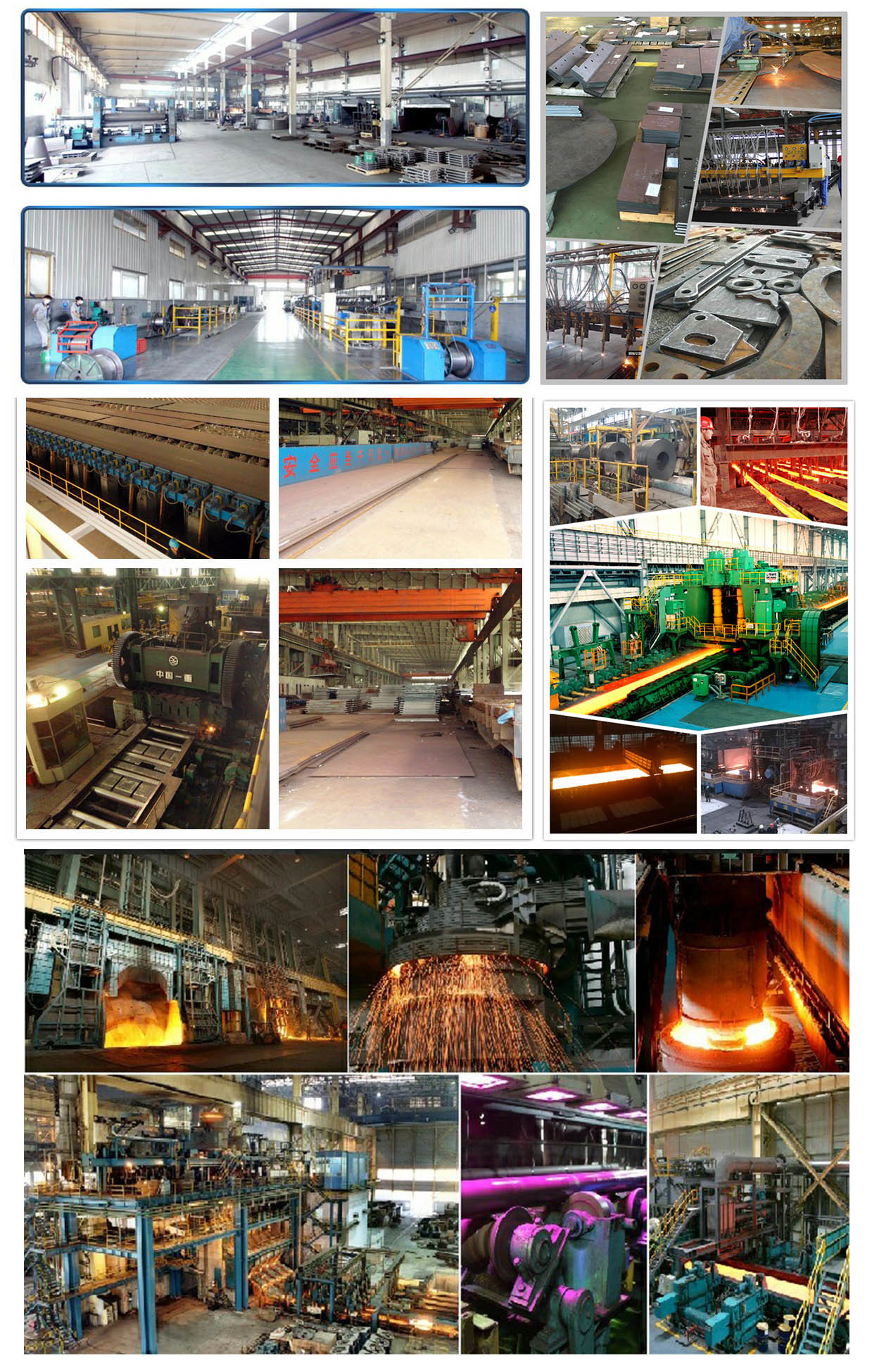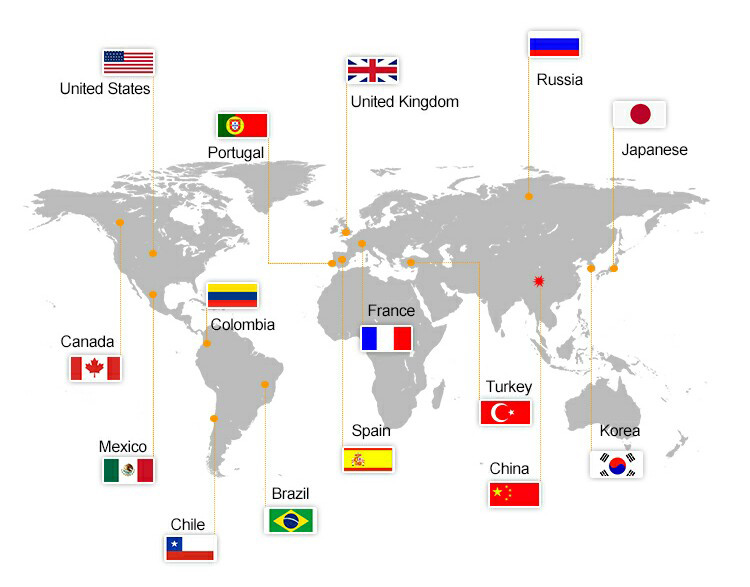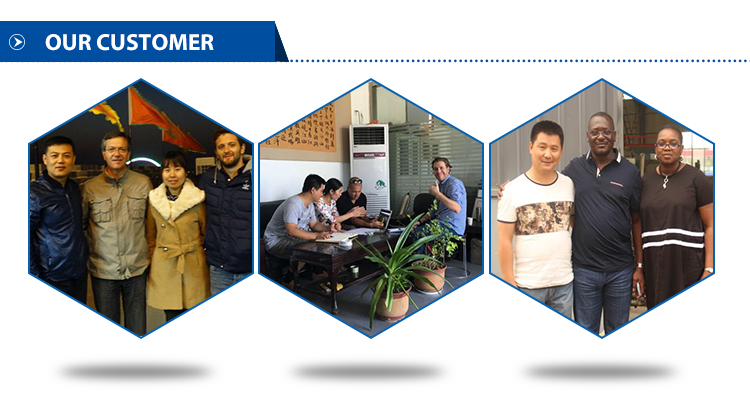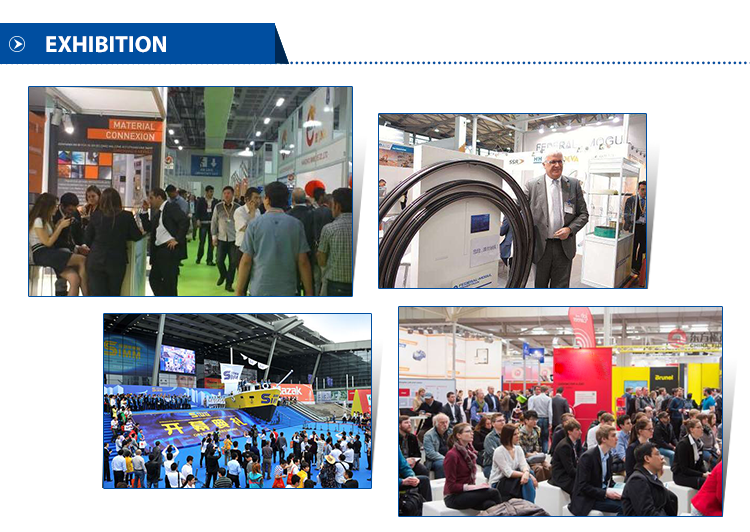Welcome to Shandong Charming Steel Co.,Ltd !
Tel : 0086 18264535555 E-mail : cmgc@sdcmsteel.cn
ONLINE MESSAGE
Direct Factory Sale High Precision Q235 Q235B Q195 Ss400 Carbon Steel Pipe
A steel with a hollow section and a length much greater than the diameter or circumference. According to the cross-sectional shape,
Category :
Details description
Product Description
A steel with a hollow section and a length much greater than the diameter or circumference. According to the cross-sectional shape, it is divided into round, square, rectangular and special-shaped steel pipe; according to the material, it is divided into carbon structural steel pipe, low-alloy structural steel pipe, alloy steel pipe and composite steel pipe; according to the purpose, it is divided into transportation pipelines, engineering structures, Steel pipes for thermal equipment, petrochemical industry, machinery manufacturing, geological drilling, high-pressure equipment, etc.; according to the production process, it is divided into seamless steel pipes and welded steel pipes, among which seamless steel pipes are divided into hot-rolled and cold-rolled (drawn) Two types, welded steel pipes are divided into longitudinal welded steel pipes and spiral welded steel pipes.
Steel pipe is not only used for conveying fluids and powdered solids, exchanging heat, and manufacturing mechanical parts and containers, it is also an economical steel. Using steel pipes to manufacture building structure grids, pillars and mechanical supports can reduce weight, save metal by 20-40%, and realize factory mechanized construction. The use of steel pipes to manufacture highway bridges not only saves steel, simplifies construction, but also greatly reduces the area of the protective layer and saves investment and maintenance costs.
By production method
Steel pipes can be divided into two categories according to production methods: seamless steel pipes and welded steel pipes. Welded steel pipes are referred to as welded pipes for short.
1. According to production methods, seamless steel pipes can be divided into: hot-rolled seamless pipes, cold drawn pipes, precision steel pipes, hot expanded pipes, cold spinning pipes and extruded pipes.
Bundles of steel pipes
Bundles of steel pipes
Seamless steel pipes are made of high-quality carbon steel or alloy steel, and are divided into hot rolled and cold rolled (drawn).
2. Welded steel pipes are divided into furnace welded pipes, electric resistance welded (resistance welded) pipes and automatic arc welded pipes due to their different welding processes. Due to their different welding methods, they are divided into two types: straight seam welded pipes and spiral welded pipes. It is round welded pipe and special-shaped (square, flat, etc.) welded pipe.
Welded steel pipes are formed by welding steel plates rolled into a tube shape with butt seams or spiral seams. In terms of manufacturing methods, they are divided into welded steel pipes for low-pressure fluid transportation, spiral seam electric welded steel pipes, direct coil welded steel pipes, and electric welded pipes. Seamless steel pipes can be used for liquid pressure pipes and gas pipes in various industries. Welded pipelines can be used for water pipelines, gas pipelines, heating pipelines, electrical pipelines, etc.
By material
Steel pipes can be divided into carbon pipes, alloy pipes, stainless steel pipes, etc. according to the pipe material (that is, steel type).
Carbon tubes can be divided into ordinary carbon steel tubes and high-quality carbon structural tubes.
Alloy pipe can be divided into: low alloy pipe, alloy structure pipe, high alloy pipe and high strength pipe. Bearing tubes, heat-resistant and acid-resistant stainless tubes, precision alloy (such as Kovar) tubes and high-temperature alloy tubes, etc.
Classified by connection method
Steel pipes can be divided into smooth pipes (with no threads on the pipe ends) and threaded pipes (with threads on the pipe ends) according to the connection method of the pipe ends.
The wire tube is divided into: ordinary wire tube and tube end thickened wire tube.
Thickened wire tube can also be divided into: external thickening (with external thread), internal thickening (with internal thread) and internal and external thickening (with internal and external threads) and other wire turning tubes.
According to the thread type, the threaded tube can also be divided into: ordinary cylindrical or conical thread and special thread.
In addition, according to user needs, wire pipes are generally delivered with pipe joints.
According to plating characteristics
Steel pipes can be divided into black pipes (not plated) and coated pipes according to the characteristics of surface coating.
Coated pipes include galvanized pipes, aluminum-plated pipes, chrome-plated pipes, aluminized pipes and other alloy-layer steel pipes.
Coated tubes include outer coating tubes, inner coating tubes, and inner and outer coating tubes. The commonly used coatings are plastic, epoxy resin, coal tar epoxy resin and various glass-type anticorrosive coating materials.
Galvanized pipe is divided into: KBG pipe, JDG pipe, threaded pipe and so on.
By purpose
1. Pipes for pipes. Such as: seamless pipes for water, gas pipes, steam pipes, oil pipelines, and oil and gas trunk lines. Agricultural irrigation water taps with pipes and sprinkler irrigation pipes, etc.
2. Thermal equipment pipes. Such as boiling water pipes and superheated steam pipes for general boilers, superheating pipes, large smoke pipes, small smoke pipes, arched brick pipes and high temperature and high pressure boiler pipes for locomotive boilers.
3. Pipes for machinery industry. Such as aerospace structural tubes (round tube, oval tube, flat oval tube), automobile half-shaft tube, axle tube, automobile tractor structure tube, tractor oil cooler tube, agricultural machinery square tube and rectangular tube, transformer tube and bearing Tube and so on.
4. Pipes for petroleum geological drilling. Such as: oil drilling pipes, oil drill pipes (kelly and hexagonal drill pipes), drill stems, oil tubing, oil casing and various pipe joints, geological drilling pipes (core pipe, casing, active drill pipe, drill stem , Press hoop and pin joints, etc.).
5. Tubes for the chemical industry. Such as: petroleum cracking pipes, chemical equipment heat exchangers and pipes, stainless acid-resistant pipes, high-pressure pipes for fertilizers, and pipes for transporting chemical media.
6. Other departments use management. Such as: container tube (tube for high-pressure gas cylinder and general container tube), tube for instrument and instrument, tube for watch case, injection needle and tube for medical equipment, etc.
According to section shape
The steel type and specifications of steel pipe products are extremely diverse, and their performance requirements are also various. All these should be differentiated according to user requirements or changes in working conditions. Generally, steel pipe products are classified according to cross-sectional shape, production method, pipe material, connection method, plating characteristics and use.
Steel pipes can be divided into round steel pipes and special-shaped steel pipes according to their cross-sectional shape.
Special-shaped steel pipes refer to steel pipes with various non-circular cross-sections.
The main ones are:
Square tube,
Rectangular tube,
Oval tube,
Flat oval tube,
Semicircular tube,
Hexagonal tube,
Hexagonal inner tube,
Unequal hexagonal tube,
Equilateral triangle tube,
Pentagonal plum tube,
Octagonal tube,
Convex tube,
Double convex tube,
Double concave tube,
Multi-concave tube,
Seed-shaped tube,
Flat tube,
Rhombus tube,
Star tube,
Parallelogram tube,
Ribbed pipe,
Drop tube,
Inner finned tube,
Twisted pipe,
Type B tube,
D type tube and multilayer tube, etc.
According to the shape of the longitudinal section, steel pipes are divided into equal section steel pipes and variable section steel pipes. Variable section (or variable section) steel pipe refers to a steel pipe whose cross-sectional shape, inner and outer diameter and wall thickness along the length of the pipe change periodically or non-periodically. It mainly includes: outer tapered tube, inner tapered tube, outer stepped tube, inner stepped tube, periodic section tube, corrugated tube, spiral tube, steel pipe with fins, and gun barrel with double wire.


Factory appearance

Packing & Delivery

Our Company
Shandong Chengming Steel Co.,Ltd
Our company supplies cold/hot-rolled stainless steel sheets,stainless steel bars ,stainless steel coil stainless steel pipes,lead plate,bearing steel,spring steel,steel plate pile,tank plate,alloy steel plate,weather resistant steel plate and wear resistant plate to many steel factories from at home and abroad, including Shanxi Taigang Iron& Steel CO,.LTD (TISCO) Zhangjiagang Pohang (ZPSS), Shanghai Krupp, Ningbo Baoxin and steel factories in Taiwan area, Mainland Chinese and foreign countries and regions.
Our annual capacity is 25, 000 tons. The Annual Domestic Sale is 20 million, Annual Exported Sale about 12 million dollars.Our products supplied to more than 20 countries, such as Indonesia, Spain, Japan, Korea, Vietnam, Italy, Israel,Australia, Malaysia, Brazil, Pakistan, U. A. E, Peru, India etc. Good quality has been getting more and more prise from buyers at home and abroad.Our long-term business lines are 304 .202, 201 .430.409L, 304L, 316L, 309S and 310S, Finish: 2B ,BA ,NO.1 NO.4 ,HL, NO.8 and so on . For the sheets and coils,the thickness ranging from 0.3mm to 100mm.For the bars,the diameter ranging from 1mm to 300mm.For the pipes ,we have seamless pipe and weld pipe. Meanwhile, our company is also engaged in the long-term supply of homemade & imported medium and thick plates,galvanized or carbon



ONLINE MESSAGE
RELATED PRODUCTS
Steel Sheet pile Description The steel sheet pile is a kind of steel structure with a linkage device on the edge, and this linkage device can be freely combined to form a continuous and compact steel structure with a retaining wall or a water retaining wall. The steel sheet pile is a type of steel with a lock. Its cross-sections are straight, trough and Z-shaped. There are various sizes and interlocking forms. The common ones are Larsonian, Lakwanaian and so on. Its advantages are: high strength, easy to penetrate hard soil; can be constructed in deep water, if necessary, add diagonal support to become a cage. It has good waterproof performance; it can be formed into cofferdams of various shapes as required and can be reused many times. Therefore, it has a wide range of uses. classification Steel sheet pile products are classified into cold-formed thin-walled steel sheet piles and hot-rolled steel sheet piles according to the production process. (1) There are two types of cold-formed steel sheet piles: non-bite type cold-formed steel sheet piles (also called channel plates) and bite type cold-formed steel sheet piles (divided into L-shaped, S-shaped, U-shaped, and Z-shaped) . Production process: Use thinner plates (commonly used thickness 8mm ~ 14mm) to be continuously rolled and formed in the cold bending unit. Advantages: less investment in the production line, lower production cost, flexible control of product size. Disadvantages: the thickness of each part of the pile body is the same, the section size cannot be optimized, which leads to an increase in steel consumption, the shape of the lock part is difficult to control, the joint is not tightly buckled, and the water cannot be stopped, and the pile body is easy to tear during use. (2) Hot-rolled steel sheet piles Hot-rolled steel sheet piles in the world mainly include U-shaped, Z-shaped, AS-shaped, H-shaped and dozens of specifications. The production, processing and installation processes of Z-type and AS-type steel sheet piles are relatively complicated, and are mainly used in Europe and America; U-type steel sheet piles are mainly used in China. Production process: It is formed by high temperature rolling by a section steel rolling mill. Advantages: standard size, superior performance, reasonable cross-section, high quality, and tight water barrier for the lock bite. Disadvantages: technical difficulty is relatively high, production cost is relatively high, specification series are not flexible. In engineering construction, the application range of cold-formed steel sheet piles is relatively narrow, and most of them are used as supplementary materials for applications. Hot-rolled steel sheet piles have always been the leading product for engineering applications. Based on the many advantages of steel sheet piles in construction operations, the General Administration of Quality Supervision, Inspection and Quarantine of the People's Republic of China and the National Standardization Management Committee issued the national standard for "Hot Rolled U-shaped Steel Sheet Pile" on May 14, 2007, and on December 1, 2007 Formally implemented. At the end of the 20th century, Maanshan Iron & Steel Co., Ltd. produced more than 5,000 tons of U-shaped steel sheet piles with a width of 400mm with the introduction of the universal rolling mill production line from abroad. The U-shaped steel sheet piles were successfully used in the cofferdam of Nenjiang Bridge and the 300,000 tons of Jingjiang New Century Shipyard. Ton shipyard and Bangladesh flood control projects. However, due to the low production efficiency, poor economic efficiency, low domestic demand and insufficient technical experience during the trial production period, continuous production was not possible. According to statistics, the annual consumption of steel sheet piles in my country remains at about 30,000 tons, accounting for only 1% of the world’s total, and it is limited to permanent projects such as the construction of some ports, wharves, and shipyards, as well as the construction of bridges, cofferdams, and foundation pit support Temporary works. The cold-formed steel sheet pile is continuously rolled and formed by the cold-formed unit, and the side lock can be continuously overlapped to form a steel structure of the sheet pile wall. The cold-formed steel sheet pile is made of thinner plates (commonly used thickness is 8mm-14mm) and processed by cold-formed forming units. The production cost is lower and the price is cheap, and the fixed-length control is more flexible. However, due to the simple processing method, the thickness of each part of the pile body is the same, the cross-sectional size cannot be optimized, which leads to an increase in steel consumption; the shape of the lock part is difficult to control, the joint is not tightly buckled, and the water cannot be stopped; limited by the capacity of cold bending processing equipment, It can produce low-strength ste
The steel sheet pile is a kind of steel structure with a linkage device on the edge, and this linkage device can be freely combined to form a continuous and compact steel structure with a retaining wall or a water retaining wall.
Stainless steel round steel belongs to the category of long products and bars. The so-called stainless steel round steel refers to a long product with a uniform circular cross section







